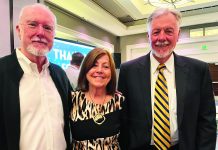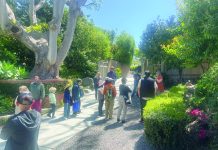Projections Can Lead Us Astray

They said house prices in Laguna were so high that families with children wouldn’t be buying here any more. We will have declining enrollment, with not enough students to operate our three elementary schools, the superintendent of Laguna Beach schools projected in 1981.
Aliso Elementary School, where Fred Lang Park is now, was the focus of studies to evaluate school closing. There were massive parent and community objections. Hearings filled the high school auditorium. Nevertheless, in spring of 1981 the school board voted to close Aliso, using the declining enrollment theory as justification. They promised not to sell the property for five years, and to revisit enrollment patterns in the meantime.
Three years later the school board broke that promise and sold the property for $2.6 million to the County of Orange. They chose the Tuesday before July 4 to make that decision, after assuring the community in June that they were not going to sell. Because of the holiday, Cindy Prewitt and I were the only Aliso School advocates at that fateful meeting. We were powerless to change the board members’ minds.
Ever since the closure, South Laguna children have traveled to El Morro School, over six miles to the north, a drive that can take a half hour or more in traffic.
We have never lacked for young children in our neighborhood, and as we walk past the bus stop with its lines of eager youngsters at the Village Green park, I am reminded of those decisions now so long ago to close and sell our nearby and beloved neighborhood school.
Now just in the few blocks surrounding our house we have more babies than ever before. We have Dylan, Piper, Max, and Caleb. A little older are Kaiian, Shaylee, Jacob and another Caleb. Strollers carrying children from further blocks pass our house hourly. No more babies? Declining enrollment?
Closing and selling Aliso School was a major decision that affected children, parents and the whole community, and the effect continues now and far into the future.
Decisions like that can change our community forever. But they’re not just in the past–they keep coming.
Now we’re confronting a decision on whether to allow short-term lodging in our residential areas. Approving it will commercialize our neighborhoods and bring the tourist industry and its impacts even closer to our every day lives.
Billy Fried made the argument in his recent column that allowing short term lodging will help make living in Laguna more affordable, allowing middle income people to make their mortgage payments. He even quotes me when I was advocating for housing for “people with normal jobs and incomes” in a previous column.
Renting homes, or parts of homes, short-term could be a stop-gap measure to make mortgage payments, but the effect won’t be permanent. If the short-term rental option were to be legalized, that additional income opportunity would be worked into the financial pro forma, upping the price of housing even more.
And what about the renters of apartments and rooms who are being displaced so that temporary vacationers can take their places? Long-term rentals are becoming more expensive and harder to find, reducing housing options for people with normal jobs and incomes.
The April 1930 issue of a local magazine called The Racket outlined the ongoing Laguna dilemma:
“What we want is for those who are determining what Laguna is to be at present, and how it will be in the future, to be a bit careful what they do. Laguna HAS lost its charm of 10 years ago. People came here too rapidly and did things too rapidly. . . .” Yes, even in 1930, Lagunans were starting the process of careful consideration, recognizing that we have a wonderful place to protect and cherish.
We can’t have too many Lagunans being “a bit careful” about where our lovely city is going. We needn’t jump into irreversible changes because of world-wide tech companies’ business models and projections for the future. We can follow the lead of cities like Santa Barbara and Carmel and keep our residential areas residential.
Landscape architect Ann Christoph lives in South Laguna.




